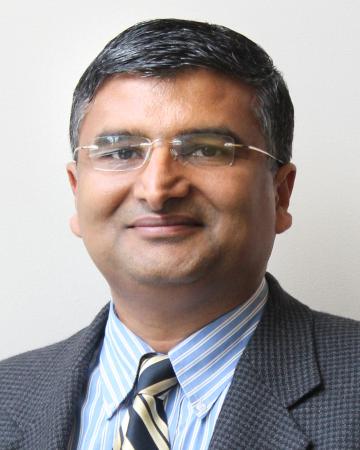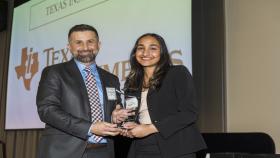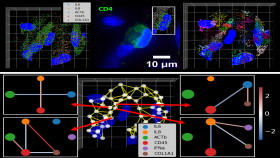Medical robotics has been instrumental in revolutionizing medical diagnosis and therapy for the past few decades. However, there are significant gaps in healthcare delivery for both adult and pediatric populations. The newly launched Georgia Center for Medical Robotics (GCMR) will address the needs of both populations by bringing together experts in several areas of medicine as well as technology from the nano to macro-scale.
The new research center at the Georgia Institute of Technology is partnering with Emory University, Children’s Healthcare of Atlanta, and Morehouse School of Medicine, and is led by Jaydev Desai, professor in the Wallace H. Coulter Department of Biomedical Engineering (a joint department of Georgia Tech and Emory University). Desai is also the associate director of the Institute for Robotics and Intelligent Machines (IRIM) leading the medical robotics and human augmentation area, and a researcher in the Petit Institute for Bioengineering and Bioscience at Georgia Tech.
Desai’s lab is a place where tiny technology is being used to foster big ideas, where small robots are being designed to carry out great tasks that would improve the lives of patients and the clinicians who treat them.
“We’re interested in making the little fingers at the tip of an elephant arm,” says Desai, professor in the Wallace H. Coulter Department of Biomedical Engineering (a joint department of Georgia Tech and Emory University), associate director of the Institute for Robotics and Intelligent Machines (IRIM) leading the medical robotics and human augmentation area, and a researcher in the Petit Institute for Bioengineering and Bioscience at Georgia Tech.
Those little fingers are kind of the reason Desai came to Atlanta last year from the University of Maryland. They’re part of the impetus that led to creation of the Georgia Center for Medical Robotics (GCMR), the multidisciplinary research initiative being launched at Georgia Tech.
“Really, this is a vision I’ve had for a very long time, to develop a center in the area of medical robotics,” explains Desai, founding director of the GCMR. “It’s one of the primary reasons I came to Georgia Tech.”
He was particularly lured by the prospect of collaborating with the Emory and Morehouse schools of medicine, and Children’s Healthcare of Atlanta.
“The question I ask myself is, ‘how can we make an impact in different areas of medical robotics,’ and the answer is, you bring together a combination of excellent engineering and top notch medicine,” says Desai, who has been pleasantly floored by the feedback and interest among clinicians like Josh Chern, a pediatric neurosurgeon at Children’s Healthcare of Atlanta.
“A surgeon’s ability to see and to physically manipulate tissues are two of the basic tenets of surgery,” says Chern. “I believe surgical robotics will be an important next step to improve the precision and accuracy of surgical manipulations.”
Using engineering principles to solve medical problems is a burgeoning field that will keep growing, offering patients more options, notes David Stephens, interim dean at the Emory School of Medicine.
“Traditional drug therapy and diagnostics will continue to develop and improve, but new technological applications and innovative approaches will be critical in improving outcomes and increasing efficiencies in health care delivery,” Stephens says.
Meanwhile, Desai’s lab is already working on robots that can take a surgeon like Chern outside his line of sight – machines that can be lowered into the brain and sweep side to side, or rotate 360 degrees, offering previously impossible vantage points.
Chern also points to trends in healthcare delivery that have “focused on efficiency, minimizing errors and waste, and minimizing patient discomfort, to name a few.” He and fellow GCMR stakeholders see the research center as a pathway to further improvements in the safety and quality of care.
“With a desire to curb health care costs but also provide improved care, the application of robotics for precision surgery and in rehabilitation is very promising,” notes Steve Cross, Georgia Tech Executive Vice President for Research. “Georgia Tech, with its large array of regional health care organizations and the industry base, make this the perfect place to do leading edge research, co-innovate with health care professionals, and accelerate translations of research into medical use.”
Team Approach
Desai has invited a wide-range of experts into the fold, and is thinking beyond robotics, strictly speaking. You may not be working on robots, but perhaps, for example, you’ve developed imaging processing technology that could be applied to one of these machines. The point is, Desai and his colleagues are encouraging the questions and the conversation, and identifying needs in the delivery of care – needs that change quickly.
“Healthcare is undergoing a time of rapid change in terms of human augmentation, automation, and quality control of diagnostic processes,” notes Carolyn Meltzer, GCMR advisory board member and associate dean for research at Emory University School of Medicine, where she chairs the Department of Radiology and Imaging Services.
One of the center’s distinguishing characteristics, Desai says, is its focus on pediatric as well as adult patients. He’s developing patient-specific devices, utilizing 3D printing technology to create tailor-made medical robots.
“We’re trying to develop very small, miniature technologies that are, by comparison, much smaller than existing devices in the marketplace,” says Desai.
In addition to building new bridges between multiple disciplines (with more than 40 faculty researchers already, all of them aimed toward developing better medical robotic devices), the center also helps the Coulter Department further its two-headed mission of creating academic as well as research opportunities.
Susan Margulies, chair of the Coulter Department, calls the GCMR, “an exciting, timely initiative in biomedical engineering at the intersection of engineering, computing sciences, medicine, and health that will offer educational, training, and research opportunities for faculty and students. The Coulter Department has a rich history of excellence in transformational research and in translating biomedical engineering research to improve quality of life, and the GCMR will be one of our signature programs.”
The development and growth of GCMR also helps solidify Atlanta’s reputation as a hub for medical robotics research. With a long-established culture of collaboration between different institutions, the city is a natural location for this kind of endeavor, according to Stephens, who points to some of the region’s proven benefits: the highly-ranked Coulter Department; an existing partnership between Tech, Emory, and the Morehouse School of Medicine in the NIH-funded Atlanta Clinical and Translational Science Institute; Children’s Healthcare of Atlanta; and the Georgia Research Alliance.
“Atlanta’s well-established academic and health care partnerships will provide a strong foundation,” Stephens assures. “And the center will create even more opportunities for shared initiatives.”
Desai, who heads up the RoboMed lab in the Coulter Department, may be the first faculty member at Georgia Tech to be fully engaged in the area of surgical robots, but he doesn’t expect to be lonely. In fact, he’s already working on bringing the world to Atlanta, creating the International Symposium on Medical Robotics, which debuts next year.
Some of the world’s top researchers from academia and industry will come together March 1-3, 2018, at the historic Academy of Medicine, to exchange ideas and foster future developments in the field. And the symposium should also serve as a fitting grand-opening for Georgia Tech’s newest research center.
“We want the Georgia Center for Medical Robotics to become a sustainable central hub of research and thought leadership,” says Desai. “So we’re making ourselves visible to the outside world.”
LINKS:
Georgia Center for Medical Robotics
International Symposium for Medical Robotics
CONTACT:
Jerry Grillo
Communications Officer II
Parker H. Petit Institute for
Bioengineering and Bioscience
Media Contact
Jerry Grillo
Communications Officer II
Parker H. Petit Institute for
Bioengineering and Bioscience
Keywords
Latest BME News
Commercialization program in Coulter BME announces project teams who will receive support to get their research to market.
Courses in the Wallace H. Coulter Department of Biomedical Engineering are being reformatted to incorporate AI and machine learning so students are prepared for a data-driven biotech sector.
Influenced by her mother's journey in engineering, Sriya Surapaneni hopes to inspire other young women in the field.
Coulter BME Professor Earns Tenure, Eyes Future of Innovation in Health and Medicine
The grant will fund the development of cutting-edge technology that could detect colorectal cancer through a simple breath test
The surgical support device landed Coulter BME its 4th consecutive win for the College of Engineering competition.
New research from Georgia Tech helps doctors predict how therapies will interact with a child's immune system, potentially improving outcomes and reducing risks.









